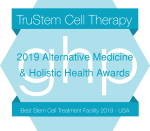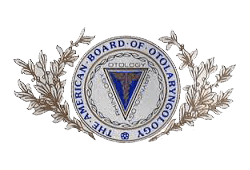TruStem Cell Therapy™ for Parkinson's Disease
Motor Symptoms
Bradykinesia – slowness of movement and loss of voluntary movement
Rigidity – unusual stiffness in a limb or other body part
Resting tremors – uncontrollable movement that affects a limb when it is at rest
Postural instability
Gait and reduced facial expressions
Non-motor symptoms
Cognitive impairment – decline in ability to multi-task or concentrate
Mood disorders – depression and anxiety
Sleep issues – REM sleep disorder
Low blood pressure – when standing
Drooling problems
Speech and swallowing problems
What is Parkinson’s Disease?
Parkinson’s Disease (PD) is a chronic and progressive movement disorder, meaning that symptoms continue and worsen over time. Nearly one million people in the US are living with Parkinson’s disease. The cause is unknown, and although there is presently no cure, there are treatment options such as medication and surgery to manage its symptoms.
Parkinson’s involves the malfunction and death of vital nerve cells in the brain, called neurons. Parkinson’s primarily affects neurons in an area of the brain called the substantia nigra. Some of these dying neurons produce dopamine, a chemical that sends messages to the part of the brain that controls movement and coordination. As PD progresses, the amount of dopamine produced in the brain decreases, leaving a person unable to control movement normally.
There are five stages of Parkinson’s disease:
Stage 1
– Patients exhibit mild symptoms, such as tremoring and loss of balance. Typically this will occur in a single limb.
Stage 2
– The symptoms are now bilateral affecting both limbs and both sides of the body.
Stage 3
– Inability to walk or stand including a noticeable slowing of physical movement.
Stage 4
– Severe symptoms are noticeable however the patient can still walk. Rigidity and bradykinesia are often visible. Tremors or shakiness of the earlier stages may lessor become non-existent.
Stage 5
– In the final stage of Parkinson’s, patients are unable to take care of themselves and may not be able to stand or walk. These patients require constant nursing care.
What causes Parkinson’s Disease?
Parkinson's Disease Stem Cell Treatment
What are stem cells?
What is Parkinson’s stem cell treatment?
The symptoms of Parkinson’s disease result from the damage and death of specialized nerve cells in a part of the brain called the substantia nigra pars compacta. When these nerve cells cease to function properly, certain messages from the brain are no longer effectively transmitted to the body. This results in a number of distinctive symptoms including tremors, balancing difficulties, and loss of general mobility. Stem cells may have the potential to repair some of the CNS damage brought on by this disease through anti-inflammation, angiogenesis and neurotrophic factors.
What types of cells are used in Parkinson’s disease stem cell treatment?
TruStem Cell Therapy provides access to treatment that utilizes a patient’s stem cells isolated from their own bone marrow. There are multiple inherent benefits afforded by the utilization of bone marrow derived stem cells as Bone marrow (BM) and bone marrow components function in various diverse, innate therapeutic capacities.
Hematopoietic stem cells (HSCs), found within BM, are the body’s source of most cells found in the peripheral or circulating blood. These include red blood cells and white blood cells (such as monocytes). Evidence suggests that BM-derived monocytes may act to improve certain neurodegenerative conditions. In this disease environment exhausted microglia cannot efficiently clear A𝛽 deposits, leading to peptide buildup and neurodegeneration. In this state, monocytes easily bypass the compromised blood-brain-barrier, adhere to A𝛽 positive veins, then phagocytose and transport peptide from the brain microvasculature into the circulating blood.
In addition to HSCs, mesenchymal stem cells (MSCs) are also contained within BM. Evidence suggests MSCs can enter the circulating blood during injury and have been shown to readily home to areas of injury or inflammation. Once at these damaged tissue sites, MSCs can exert both protective cellular and immunomodulatory effects believed to be critical in many neurological conditions.
What steps are involved in receiving treatment through TruStem Cell Therapy?
Harvest
First a blood draw is performed followed by a minimally invasive bone marrow harvest via the iliac crest. Approximately 100cc’s of a patient’s own bone marrow is harvested through a minimally invasive, bone marrow aspiration procedure. TruStem Cell Therapy utilizes a powered bone marrow access system combined with local anesthetic allowing for consistently larger specimen of cells, extremely low levels of pain/invasiveness reported by most patients, and higher levels of sterility.
Bone marrow aspirate is preferentially utilized because it is one of the richest, most accessible sources of stem cells in the human body and falls within the FDA guidelines of minimal manipulation.
Process + Activate
Both the blood and bone marrow are immediately delivered to our dedicated, onsite laboratory staffed by our team of technicians. Once your sample is in the lab our advanced proprietary process isolates and excites regenerative cells and concentrates healing factors to hyper-physiological levels in order to facilitate the creation of a highly effective, injectable therapeutic.
Stem cell activation is part of what makes TruStem Cell Therapy unique. The activation procedure is designed to augment efficacy.
Administer
TruStem Cell Therapy utilizes both systematic and novel administration methods to fully saturate the body with stem cells while targeting specific areas of injury.
How are stem cells administered back into Parkinson’s patients through TruStem Cell Therapy?
-
Systemic IV infusion of their stem cells to fully saturate the entire body.
-
Localized injections into targeted areas of damage such as Intranasal Delivery and intramuscular injections.
What is unique about receiving stem cell therapy through TruStem Cell Therapy for Parkinson’s ?
Our focus is safety, efficacy, and patient-centric care when providing access to superior stem cell therapy.
We utilize only board certified surgeons, physicians and accredited clinicians to provide care for patients.
Laboratory protocols are developed and refined by our PhD Neuroscientist.
A clinical team with expertise in practicing cellular based medicine.
Accredited Surgical Centers for enhanced procedural and patient safety
Targeted administration methods that direct stem cells toward specific areas of damage.
Skilled Patient Advocates who are trained to provide truthful, realistic expectations resulting from stem cell therapy. We do not make outlandish promises of cures or inaccurate claims related to improvement rates.
Can this treatment cure Parkinson's?
It is important for patients and caregivers to understand that current therapies, including stem cell treatment, does not provide a cure for Parkinson’s. However, TruStem Cell Therapy may have the potential to improve a patient’s quality of life by reducing symptoms and complications related to PD as well as slowing its progression
Are stem cells FDA approved for Parkinson's?
The FDA has not approved stem cell therapy for Parkinson’s. As noted above, studies have demonstrated the safety and efficacy of stem cell therapy for Parkinson’s but additional studies are needed before FDA approval can be secured.
TruStem Cell Therapy does not claim that any applications, or potential applications, using autologous stem cells are approved by the FDA, or are even effective. We do not claim that these treatments 100% effective for any listed nor unlisted condition, intended or implied. It’s important for potential patients to do their own research based on the options that we present so that one can make an informed decision. Any decision to participate in our patient funded experimental protocols is completely voluntary.
What type of improvements can I expect from stem cell therapy?
It may be possible through these treatments, to improve a patient’s quality of life by minimizing disease related symptoms and complications. For Parkinson’s patients, improvements in any one or multiple disease related complications such as: mobility, tremors, fatigue, sleep impairment, sense of taste and smell, mood, rigidity, involuntary movement, etc… If you have questions regarding how these treatments may help you, please contact one of our Patient Advocates to learn more.




